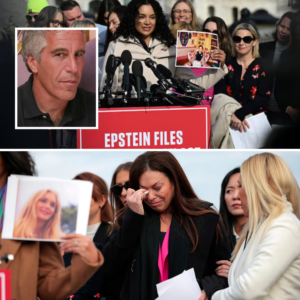Introduction
In the wake of a tragic Air India plane crash last month that claimed the lives of 260 people, the Indian Commercial Pilots’ Association (ICPA) and other pilot unions have strongly condemned speculations attributing the disaster to human error, particularly the unfounded claim that the pilot deliberately caused the crash in an act of suicide. On July 13, 2025, the ICPA issued a statement expressing deep concern over what they described as “baseless and reckless” narratives surrounding the incident. These speculations, they argue, not only lack evidence but also disrespect the victims, their families, and the dignity of the aviation profession. This article explores the controversy, the response from pilot associations, the implications of premature conclusions, and the broader context of aviation safety investigations.
The Air India Crash: A Tragic Loss
The Air India crash, which occurred last month, was one of the deadliest aviation disasters in recent Indian history. The flight, carrying 260 passengers and crew members, went down under circumstances that remain under investigation. While the exact details of the crash—such as the flight number, origin, destination, and specific date—are yet to be fully disclosed to the public, the scale of the tragedy has drawn intense scrutiny from media, authorities, and the public. Preliminary reports indicate that the aircraft experienced a catastrophic failure, but the cause has not been officially determined.

Investigations into aviation accidents are complex, often requiring months or even years to complete. They involve analyzing black box data (comprising the flight data recorder and cockpit voice recorder), examining wreckage, reviewing air traffic control communications, and assessing environmental factors. Despite the ongoing nature of the investigation, media outlets and some commentators have speculated about the cause, with some pointing fingers at the pilots, suggesting human error or even intentional misconduct.
Pilot Associations Respond
The ICPA, representing commercial pilots in India, issued a strongly worded statement on July 13, 2025, denouncing the premature and unsubstantiated claims about the crash. The association expressed particular outrage over suggestions that the pilot may have intentionally caused the crash to commit suicide. “At this stage, there is absolutely no basis for such claims,” the ICPA stated. “Making such assertions is highly insensitive to the individuals and families involved. Arbitrarily implying pilot suicide without credible evidence is a grave violation of ethics and causes harm to the professional dignity of pilots.”

The ICPA was joined by other pilot unions, including the Indian Pilots’ Guild (IPG), in calling for restraint and responsibility in public discourse. These organizations emphasized that aviation accidents are rarely the result of a single factor and that jumping to conclusions undermines the integrity of the investigation process. They urged the media and public to await the findings of the official investigation, which is being conducted by India’s Directorate General of Civil Aviation (DGCA) in collaboration with international experts.
The Harm of Speculation
The speculation surrounding the Air India crash highlights a broader issue in the aftermath of aviation disasters: the rush to assign blame. Human error is often an easy scapegoat, as it provides a seemingly straightforward explanation for complex events. However, such assumptions can have far-reaching consequences. For one, they can unfairly tarnish the reputation of pilots and crew members who are unable to defend themselves. In this case, the suggestion of pilot suicide has caused significant distress to the families of the deceased crew members, who are already grappling with their loss.
Moreover, premature speculation can mislead the public and create unnecessary panic about air travel safety. India’s aviation industry has made significant strides in recent years, with improved safety standards and training programs. Casting doubt on the professionalism of pilots without evidence risks eroding public confidence in the industry. The ICPA noted that such narratives could also deter aspiring pilots from entering the profession, exacerbating the global pilot shortage.
The Investigation Process
Aviation accident investigations are meticulous processes designed to uncover the root cause of a crash and prevent future incidents. In India, the DGCA oversees such investigations, often with assistance from international bodies like the National Transportation Safety Board (NTSB) or the International Civil Aviation Organization (ICAO). The process typically involves several steps:
Recovery of Evidence: Investigators collect physical evidence from the crash site, including the black box, aircraft components, and any relevant debris.
Data Analysis: The flight data recorder provides information on the aircraft’s performance, while the cockpit voice recorder captures crew communications. These are analyzed to reconstruct the sequence of events leading up to the crash.
Interviews and Contextual Analysis: Investigators interview air traffic controllers, maintenance crews, and other relevant personnel. They also consider factors such as weather conditions, air traffic control instructions, and the aircraft’s maintenance history.
Simulation and Testing: In some cases, investigators use flight simulators or conduct tests to replicate the conditions of the crash.
Final Report: A comprehensive report is published, detailing the cause of the crash and recommending safety improvements.
Given the complexity of this process, it is not uncommon for investigations to take months or even years. The Air India crash investigation is still in its early stages, and no official conclusions have been reached. The ICPA and other unions have emphasized that any discussion of the cause at this point is purely speculative and potentially harmful.

The Role of Pilot Training and Safety Standards
The controversy surrounding the Air India crash has also sparked discussions about pilot training and aviation safety in India. Indian pilots undergo rigorous training programs that meet international standards set by the ICAO. These programs include simulator-based training, emergency response drills, and regular proficiency checks. Air India, as one of India’s leading airlines, has a reputation for adhering to high safety standards.
However, aviation safety is a collective responsibility that extends beyond pilots. Maintenance crews, air traffic controllers, and airline management all play critical roles in ensuring safe operations. The ICPA has called for a holistic approach to the investigation, urging authorities to examine all possible factors, including mechanical issues, air traffic control errors, or external conditions like weather or bird strikes.
Ethical Considerations in Reporting
The ICPA’s statement also raises important questions about the ethics of reporting on aviation accidents. Media outlets often face pressure to provide immediate answers to complex questions, especially in the wake of a high-profile tragedy. However, sensationalized reporting can have serious consequences, including spreading misinformation and causing emotional harm to those affected. The suggestion of pilot suicide, in particular, is a sensitive topic that requires careful handling. Without concrete evidence, such claims can perpetuate stigma around mental health in the aviation industry, where pilots already face significant stress and scrutiny.
The ICPA has called on media organizations to exercise restraint and rely on verified information from official sources. They have also urged the public to be cautious about sharing unverified claims on social media, where misinformation can spread rapidly.
The Broader Context: Aviation Safety in India
India’s aviation sector has grown rapidly in recent years, becoming one of the largest and fastest-growing markets in the world. With this growth has come increased attention to safety standards. The DGCA has implemented stricter regulations, and airlines have invested heavily in modernizing their fleets and training programs. Despite these efforts, accidents like the Air India crash serve as a sobering reminder of the challenges inherent in aviation.
Globally, aviation remains one of the safest modes of transportation, with accident rates declining steadily over the decades. However, when accidents do occur, they attract significant attention due to their scale and impact. The Air India crash has renewed calls for continued investment in safety measures, including advanced technology, enhanced training, and robust regulatory oversight.
Conclusion
The Air India plane crash that claimed 260 lives last month has left a profound mark on India’s aviation community and the nation as a whole. As the investigation continues, the Indian Commercial Pilots’ Association and other pilot unions have taken a firm stand against baseless speculations, particularly those suggesting human error or pilot suicide. Their call for restraint and respect underscores the need for patience and professionalism in the face of tragedy. By awaiting the official findings of the investigation, the public can honor the memory of the victims and support a process aimed at uncovering the truth and improving aviation safety. In the meantime, the aviation community continues to mourn the loss of lives and advocate for a fair and thorough examination of the events leading to this devastating crash.




